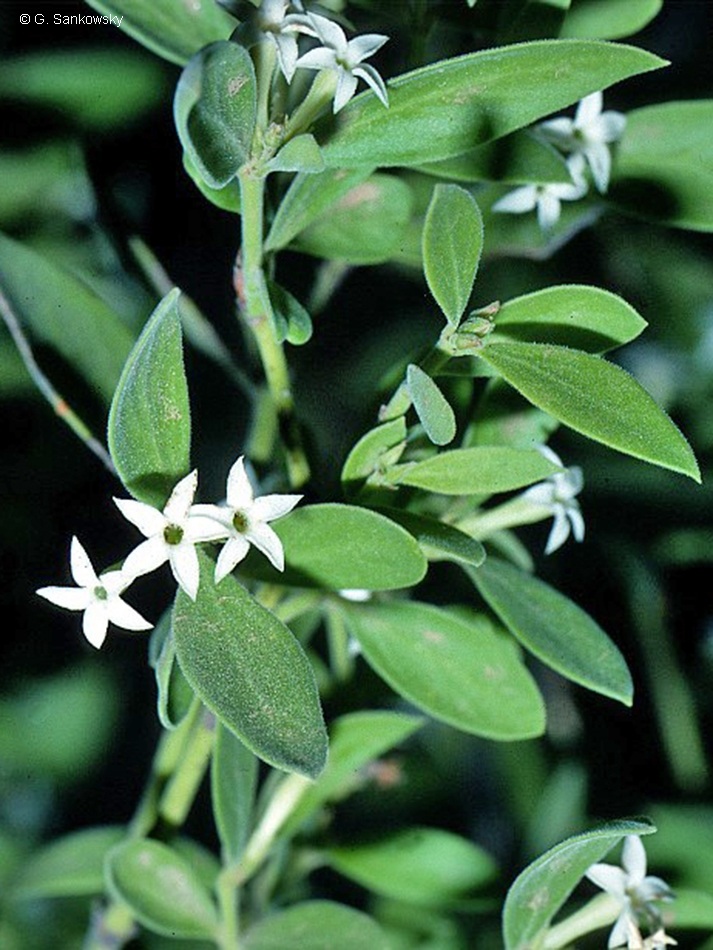Australian Tropical Rainforest Plants - Online edition
Carissa lanceolata R.Br.


Brown, R. (1810) Prodromus Florae Novae Hollandiae : 468. Type: N.T. , Sir Edward Pellew Group, 21 Dec. 1802, R. Brown (2852); lecto: BM. Fide Forster (1992), 5: 583.
Conkerberry; Conkle Berry
Usually flowers and fruits as a shrub about 3 m tall. Stems usually weak and decumbent.
Twigs and petioles produce a milky exudate. Stipules occur in two different forms, small and inconspicuous, less than 1 mm long or large sharp spines, about 10-20 mm long. Leaf blades thick and leathery, about 15-30 x 8-15 mm, venation inconspicuous on the lower surface, apex apiculate. Petioles about 1-3 mm long.
Flowers perfumed, abut 4-7 mm diam. Calyx and corolla hairy on the outer surface. Sepals about 1.8-2.5 mm long. Corolla tube about 5-8 mm long, lobes about 2.2-3.2 mm long. Anthers about 0.9-1.5 x 0.2-0.4 mm, filaments about 0.2 mm long. Ovary hairy, at least towards the apex. Style about 4 mm long, expanded to form a cup-like structure beneath the stigma. Stigma hairy, swollen but 2-lobed at the apex.
Features not available.
Widespread in WA, NT, NEQ, CEQ and southwards to northern New South Wales. Altitudinal range from near sea level to 900 m. Usually grows in open forest but occasionally found in monsoon forest. Also occurs in New Guinea.
Suspected of being poisonous to stock but the evidence is not conclusive. Everist (1974).
Food plant for the larval stages of the Common Crow Butterfly. Sankowsky & Neilsen (2000).
Root material of this species was active against some tumors. Collins et al. (1990).
This plant used medicinally by Aborigines, oily sap from chipped roots rubbed on for rheumatism. Cribb (1981).





